Key takeaways:
- Experimental electronica blends unconventional techniques and influences, allowing for personal exploration of sound and emotional resonance.
- The genre is characterized by rich textural diversity, non-traditional song structures, and innovative use of technology, inviting listeners to rethink their understanding of music.
- The crossover of electronica with metal introduces new dimensions to the music, enhancing energy and emotion through the fusion of contrasting elements.
- Key artists like Aphex Twin, Autechre, and Flying Lotus exemplify the genre’s potential to evoke deep feelings and challenge conventional music boundaries.

Understanding Experimental Electronica
Experimental electronica is a genre that pushes the boundaries of sound, often combining unconventional techniques and a variety of influences. It’s fascinating how an artist can manipulate sounds to create an atmosphere that feels both alien and familiar. Have you ever listened to a track and felt transported to another world? It’s in those moments that the beauty of experimental electronica truly shines.
When I first encountered artists like Aphex Twin, I was struck by the unexpected layers in their compositions. The way they blend ambient textures with rhythmic complexities opened my ears to a new form of music appreciation. It’s all about letting go of conventional structures and embracing the chaos, which can resonate deeply with listeners who are open to exploring their emotions through sound.
What intrigues me the most is the freedom inherent in experimental electronica. There are no strict rules; artists can play with time, rhythm, and texture as they see fit. This realm allows for a personal exploration of sound that invites listeners to question their own understanding of music. Have you ever created your own playlist that defies genre? It’s liberating, and I think that’s the essence of what makes experimental electronica so appealing.
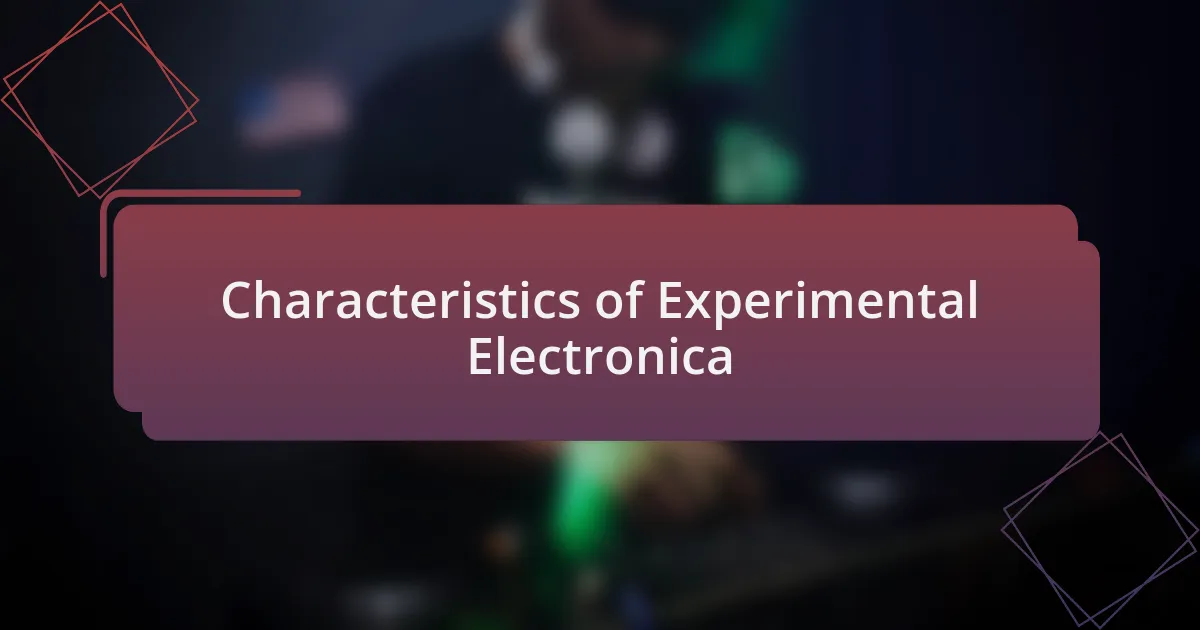
Characteristics of Experimental Electronica
The beauty of experimental electronica lies in its rich textural diversity. Artists often utilize field recordings, digital manipulation, and synthesized sounds to craft an audio palette that feels limitless. I remember the first time I came across a track that featured the sound of rain morphed into a rhythmic beat. It was a reminder of how even everyday noises can become instruments in the right hands.
One defining characteristic is its emphasis on non-traditional song structures. Unlike typical verse-chorus formats, experimental electronica often embraces long, evolving soundscapes. This fluidity can evoke a wide range of emotions; there are times I’ve found myself lost in a track for what feels like hours, experiencing a profound sense of connection. Have you ever sat in a quiet room, headphones on, allowing a song to wash over you as it unfolds? That’s the magic of this genre.
Another intriguing aspect is the use of technology and unconventional instrumentation. From glitch effects to AI compositions, the innovative approaches taken by artists can be electrifying. I find it exhilarating to witness how musicians bend the rules of sound. It raises an important question: How far can we go in reshaping the musical landscape? The answers remain as multifaceted as the genre itself, inviting listeners to join in on the exploration.
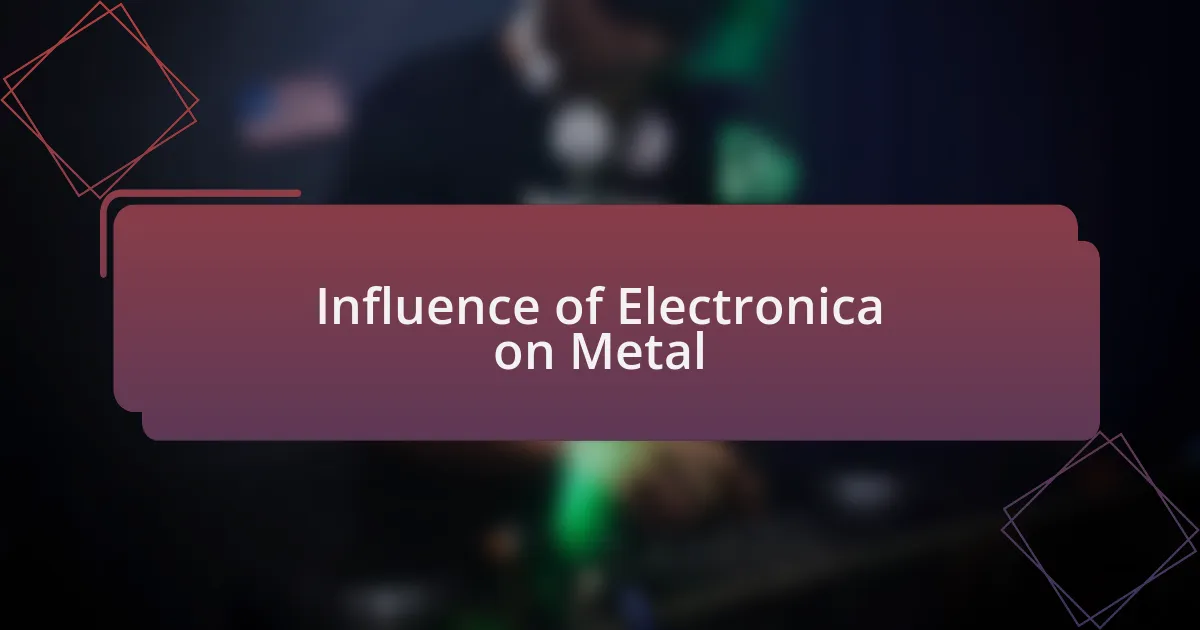
Influence of Electronica on Metal
The influence of electronica on metal is an exciting crossover that has sparked my interest for years. For instance, I’ve often found myself captivated by the way a band might integrate electronic beats into their heavy riffs. It’s like adding a new dimension to the music that amplifies both energy and emotion. Have you ever noticed how a deep bass drop can elevate a powerful guitar solo? It’s this synergy that creates an unforgettable listening experience.
When I first encountered a metal song layered with ambient electronica, it felt revolutionary. The seamless fusion of heavy instrumentation with ethereal soundscapes took me by surprise. There was a moment during a live performance where a band transitioned from an aggressive breakdown to a tranquil electronic interlude. It felt like standing at the edge of a cliff, teetering between two different sonic worlds. This ability to merge seemingly contrasting elements is what keeps me coming back for more.
Moreover, many metal artists are now exploring the realms of sampling and sound design, often inspired by their electronica counterparts. One time, I listened to an album where metallic percussion was combined with glitchy synths, and it transported me to a different realm. It made me wonder: how can such innovative ideas continue to push the boundaries of metal? The answers lie in the willingness of artists to embrace these influences and create something entirely their own.
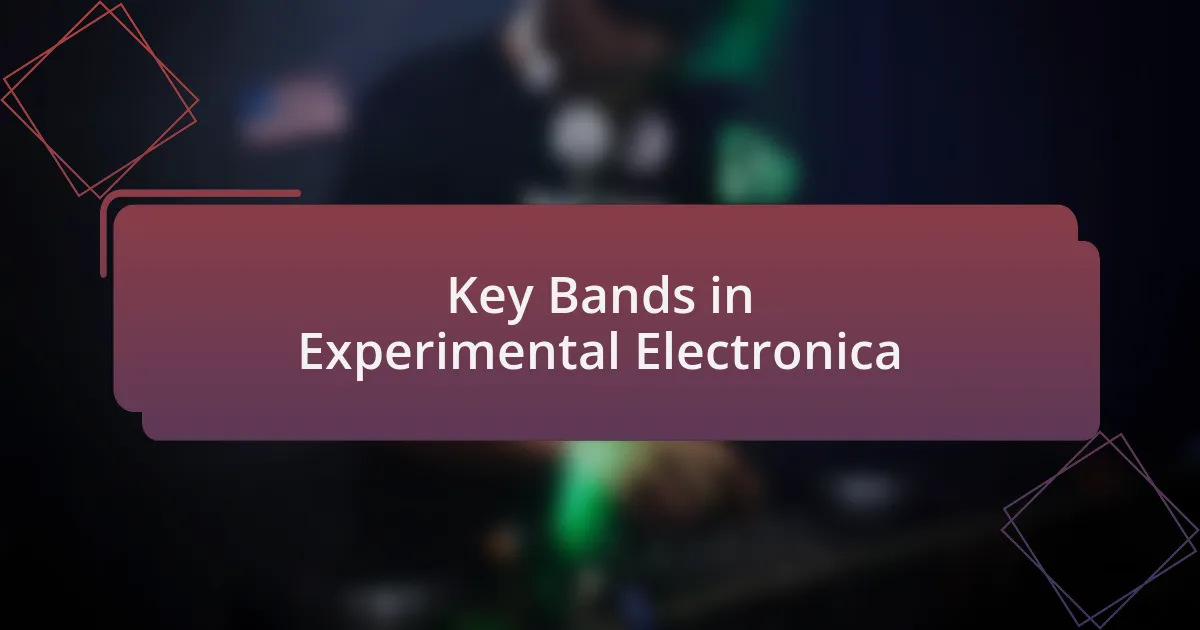
Key Bands in Experimental Electronica
I’ve always been fascinated by the diverse sounds that bands in experimental electronica integrate into their music. Take Autechre, for example. Their complex rhythms and abstract melodies challenge my understanding of conventional structure in music. When I first listened to their album “Tri Repetae,” I found myself lost in layers of sound. It made me question: can music exist without a clear form?
Another standout for me is Aphex Twin. His ability to blend whimsical, melodic lines with jarring, industrial textures resonates deeply with me. I remember hearing “Windowlicker” for the first time; it was like unlocking a door to a surreal landscape where anything was possible. The juxtaposition of playfulness and intensity left a lasting impression, pushing me to explore what emotions electronic music can evoke.
Then there’s Boards of Canada, a band that crafts soundscapes reminiscent of nostalgic memories. Their track “Roygbiv” always stirs something within me. The warmth of their sonic palette often feels like a comforting embrace, making me wonder how music can transport us back to moments we thought we had forgotten. Each listen is a reminder that the blend of experimental electronica can evoke not just feelings, but entire experiences.
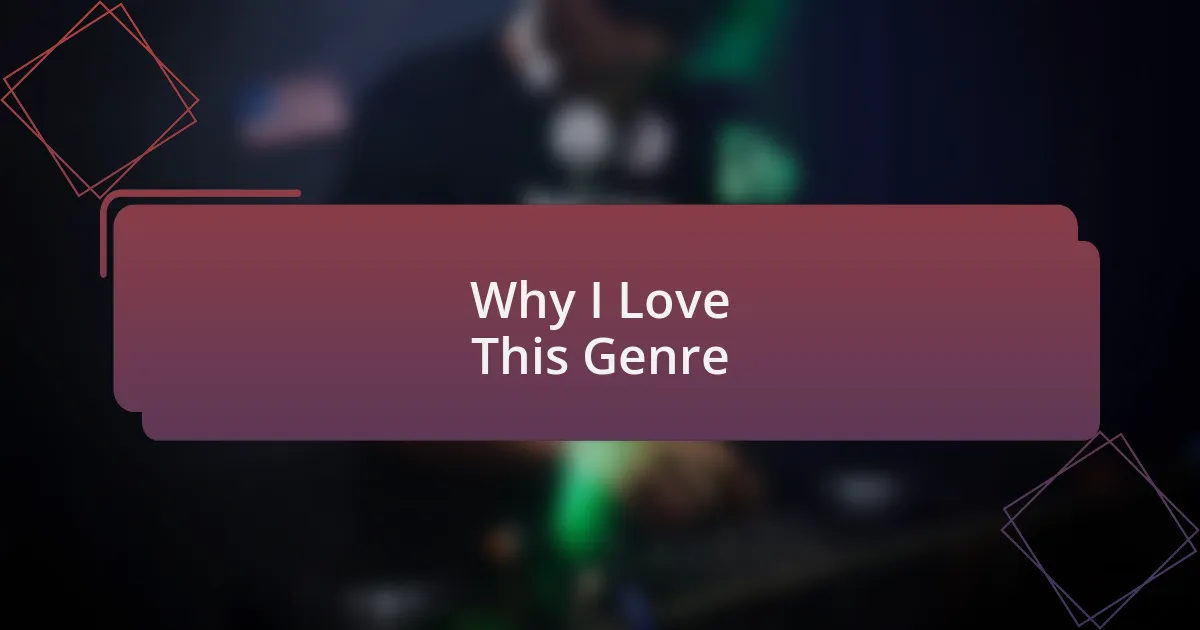
Why I Love This Genre
When it comes to experimental electronica, I find its fearless approach to sound incredibly liberating. For instance, I recall relaxing late at night, headphones on, as I delved into the chaotic yet captivating world of Venetian Snares. The way his music intertwines breakcore beats with classical samples makes you think: how can something sound so chaotic yet profound? It’s a thrilling experience that compels me to appreciate music in a whole new light.
I often reminisce about the first time I encountered the dreamy textures of Flying Lotus. His track “Never Catch Me” took me on an unexpected journey. I felt a rush of energy that was both invigorating and emotional. It made me ponder how rhythm and tempo can evoke visceral reactions, sometimes stirring up feelings that I didn’t even know were there. This genre has a unique ability to make me feel alive and connected to something greater than myself.
Moreover, I love how experimental electronica often invites me to explore my own creativity. It’s a genre that constantly challenges me to break free from traditional musical boundaries. I find myself thinking about how the layering of sounds can mirror my own thoughts and emotions. Isn’t it fascinating how a single track can encapsulate an entire spectrum of feelings? This genre’s innovative spirit inspires me to embrace my own artistic instincts and venture into uncharted territories.
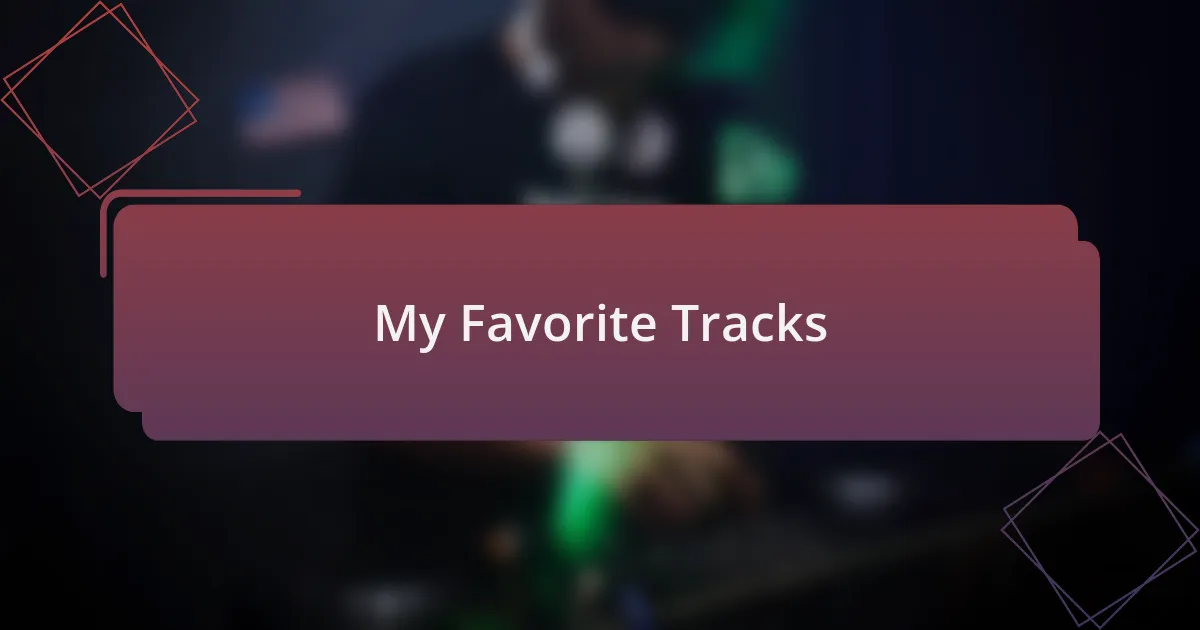
My Favorite Tracks
One of my absolute favorites has to be Amon Tobin’s “Beneath the Ice.” The intricate layers of sound take me to unexpected places, almost like wandering through a surreal, sonic landscape. I remember listening to it during a rainy afternoon, feeling each drop echo the deep, haunting rhythms. It’s remarkable how a track can bend time and space, drawing me into a meditative state.
Then there’s Max Cooper’s “Woven Ancestry.” The first time I heard it, I was utterly captivated by its delicate blend of organic and digital sounds. I felt the music wrap around me, providing comfort while simultaneously igniting curiosity. Have you ever experienced something so beautiful that it opens your mind to new perspectives? This track does just that, inviting reflections on nature and technology, harmonizing them in a way that feels incredibly refreshing.
And how could I not mention the work of Surachai? His track “Proverbial” hit me like an emotional freight train the first time I heard it. I found myself engulfed in its dark, pulsating energy, unable to shake the feeling that I was part of a greater narrative. It makes me wonder: can music transcend our everyday experiences to reveal deeper truths? In my journey with these tracks, I’ve learned to embrace the unpredictability of sound as both a comforting friend and a challenging companion.